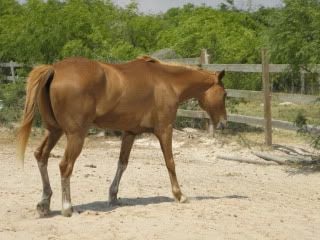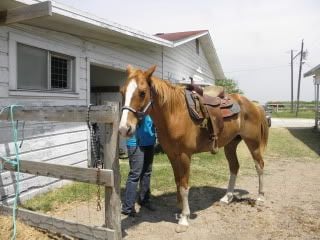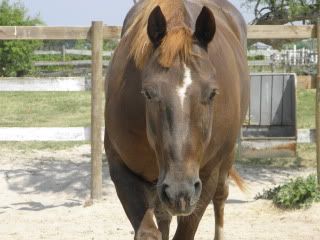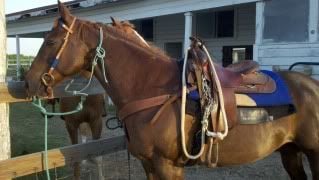There are several types of roans. The true roan is an animal with a colored coat that has white hairs sprinkled through it. The base color can be black, bay, chestnut - basically any color. Typically, the head and legs will be solid colored, with the white hairs mixed into the color on the body and neck.
Most of the genes that put white on the face and feet are collectively referred to as Sabino genes. One of the Sabino genes can cause roaning in the coat. Sometimes the roaning only appears in patches, though it can be throughout the coat, too. I own a chestnut mare that is a Sabino roan, though you really only see the white hairs during the summer. For some reason, they don't really show up in her winter coat.
Another type of "roan" is genetically part of the appaloosa pattern. These animals are called varnish roans. Varnish roans usually have a patch of darker color down the middle of the face, and on the legs. Varnish roans do get more white hairs as they age, and often wind up nearly completely white.
A lot of horses will get some white hairs in their coats, particularly on their faces, when they are advanced in years. Horses that are genetic grays start off very intensely colored, and lighten quickly as they age. It is as if the pigment-producing cells are on overdrive, producing way too much pigment, and burn themselves out at an early age. The genetic gray will start to show white hairs at an early age, and will usually be dappled by the time it is 5 years old. Gray is a dominant gene, and if a horse gets 2 copies of it, they gray out even faster. Genetic grays may wind up completely white (like the Lipizzaner horses) or may have small reddish spots (called a 'fleabitten gray').
There is a Silver gene that causes another type of gray coloring. The silver gene affects the amount of black pigment in the coat, though the greatest amount of difference is in the mane and tail. Genetic Silver blacks may also appear dappled. The most obvious difference between the horse that is a genetic gray (which will turn white) and the Silver Black with dapples is the mane. The Silver Black will usually have a white mane and tail, while the graying-out genetic gray will usually have a dark mane and tail.






